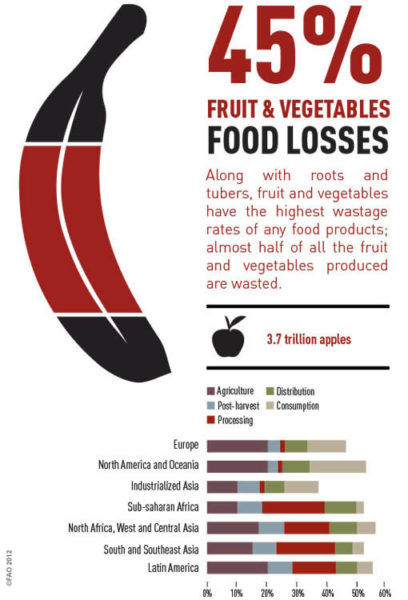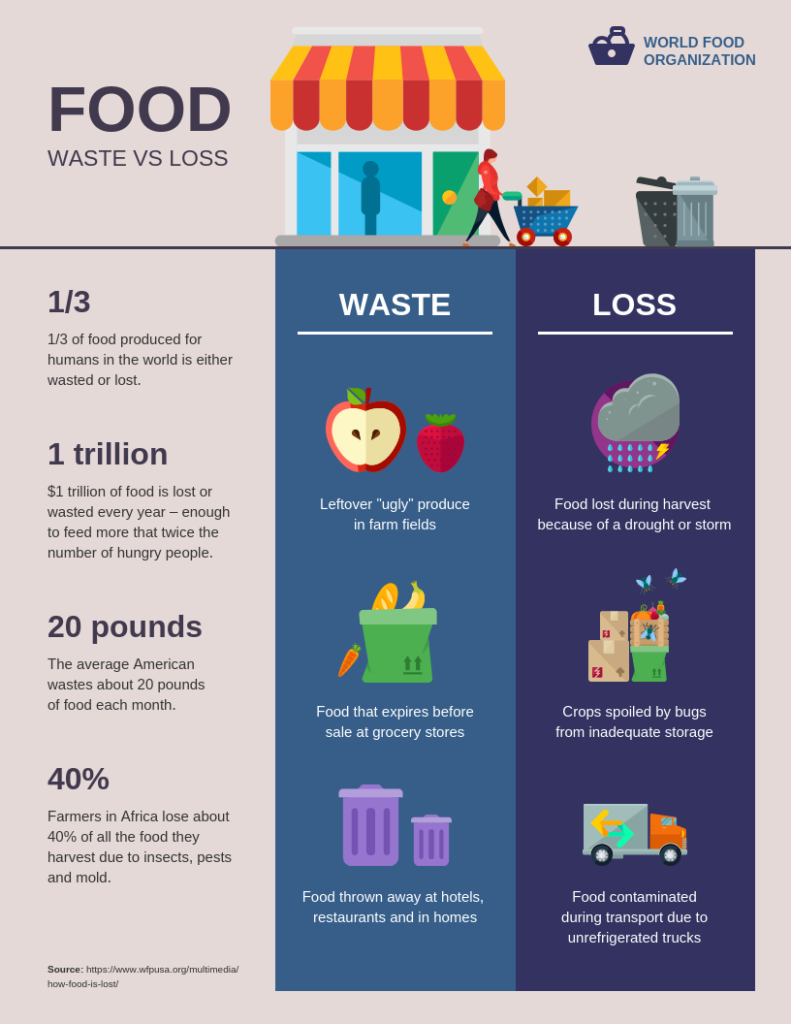Food waste is a large and growing problem that occurs at every stage of production, distribution, and consumption. In the United States, nearly 40% of all food is wasted. Moreover, the U.S. discards more food than any other country in the world. In Canada, nearly 60% of food is either wasted or lost because it goes unused, such as when crops are left in the field. The problem isn’t limited to North America, however. Worldwide, one-third of food that’s produced for human consumption is either lost or wasted.
The problem with food waste isn’t just economic, and diverting edible food from landfills to hungry people isn’t just a humanitarian concern. Food waste is also an environmental problem. When food is wasted, so is all of the energy and water that was used to grow, harvest, transport, and package it. Soil is depleted, chemical fertilizers are applied unnecessarily, and water supplies are put at risk. Then, when food is landfilled and decomposes, it produces methane, a greenhouse gas associated with climate change.
This series of articles from Go Natural Education will examine the nature of food waste, its environmental impacts, and some possible solutions. We encourage you to think critically about this important issue, and we’re committed to bringing you the facts so that you can decide for yourself what needs to change. At a time when many people are blaming animal-based foods for a host of problems, it might surprise you to learn that fruits and vegetables are wasted at higher rates than meats.
Stick with us in this series to learn more.


